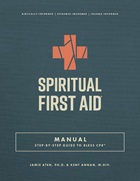Thoughts on Navigating Our Church Effectively in a ‘Moved’ Neighborhood

Adaptation from Who Moved My Neighborhood? By Mark E. Strong
Adapted from Chapter 13, “The Relational Question”
The second greatest commandment in Scripture is to love your neighbor as you love yourself (Mt 22:39). This command is only preceded by the one to love God with the totality of your being. The first command generally raises no objections. What believer would argue against the primacy of loving God? But the second command is a bit trickier. Suppose you don’t even like your neighbor—how in the world are you going to love them? If your neighbor is a complete jerk, are you still supposed to have a soft spot in your heart for them? What about if your new neighbor helped to force out of the neighborhood your old neighbor, who you did love? Does the second commandment still apply to them? Or suppose you don’t even know who your neighbors are. What do you do then?
This brings us to the relational question: Who is my neighbor? This question hurls relational passivity and indifference out the window and pushes the church to develop meaningful relational engagement and service. So to navigate our church effectively in a moved neighborhood (a neighborhood that has changed over time), we would be wise to pose this same question that a man tossed at Jesus over two thousand years ago.
Here’s the account from Luke 10:29-37:
But he, wanting to justify himself, said to Jesus, “And who is my neighbor?”
Then Jesus answered and said: “A certain man went down from Jerusalem to Jericho, and fell among thieves, who stripped him of his clothing, wounded him, and departed, leaving him half dead. Now by chance a certain priest came down that road. And when he saw him, he passed by on the other side. Likewise a Levite, when he arrived at the place, came and looked, and passed by on the other side. But a certain Samaritan, as he journeyed, came where he was. And when he saw him, he had compassion. So he went to him and bandaged his wounds, pouring on oil and wine; and he set him on his own animal, brought him to an inn, and took care of him. On the next day, when he departed, he took out two denarii, gave them to the innkeeper, and said to him, ‘Take care of him; and whatever more you spend, when I come again, I will repay you.’ So which of these three do you think was neighbor to him who fell among the thieves?”
And he said, “He who showed mercy on him.”
Then Jesus said to him, “Go and do likewise.”
The most significant conclusion we can draw from Jesus’ answer is that being neighborly is a choice. Everyone makes a choice in this story—not just the priest and the Levite but the Samaritan too. Samaritans were an ethnic group that were looked on with disdain in biblical times. They were regarded as dogs, half-breeds, and illegitimate. But the Samaritan, a human being, had to make a choice to be neighborly or not. And the same goes for us today.
We have to make a choice as a church to be neighborly or not to those around us. And this should not be a difficult choice—it is a no-brainer. We know what Jesus wants us to do. And we are all well aware of the second commandment: love your neighbor as yourself. Yet there is a risk that our churches could end up on the wrong side of the road, so to speak, where we go straight to our religious responsibilities but miss the very heart and command of God on the way.
There are three axioms we can learn from this passage. If we follow them, we won’t strike out like the priest and the Levite but will smash the ball out of the neighborhood ballpark like the Samaritan.
THREE AXIOMS
The first axiom is seeing is being. When we see a person as a neighbor, we will be present. In the story, each individual saw the poor man on the Jericho Road. But did the priest and the Levite really see him? They saw someone sprawled out on the street in dire straits, but they did not recognize him as a person who God loves or as a neighbor in need. That’s why they were not present and kept on their merry religious way. The Samaritan, however, genuinely saw the man, which compelled him to cross the street and be present.
When a church truly sees its neighbors, it will be physically present for them. We can’t be good neighbors if we are not present, and we can’t be present if we fail to see our neighbors. We need to see them and figure out how to cross the road to be with them. Sometimes we make this harder than it needs to be.
The second axiom is caring is sharing. Because he cared, the Samaritan man shared with his neighbor: “So he went to him and bandaged his wounds, pouring on oil and wine; and he set him on his own animal, brought him to an inn, and took care of him. On the next day, when he departed, he took out two denarii, gave them to the innkeeper, and said to him, ‘Take care of him; and whatever more you spend, when I come again, I will repay you’” (Lk 10:34-35).
Look at the actions flowing from his neighborly compassion. He bandages the man’s wounds. He uses his own resources—his oil and his wine that cost him money. He placed the man on his own animal while he walked. He took the man to a place where he could recoup, and he paid the bill. Also, he was willing to follow up on the man’s condition with the innkeeper. He shared his time, his resources, his money, and his reputation—all because he cared for his neighbor.
Church, do we care about the neighbors around us? Does the compassion of Jesus fill our hearts for them so we are moved to share what Jesus has given us with them? What are we willing to share and what do we need to share—our time, our resources, our money? If we are truly neighbors, something of substance should be flowing from our hearts.
Axiom three is knowing is going. Jesus concludes his discourse on being a neighbor with the words, “Go and do likewise” (Mt 10:37). Jesus had asked the lawyer who he thought was the real neighbor to the man who fell among the thieves. The lawyer replied that it was the man who had mercy on him. Once the man answered correctly, Jesus told him to go and do likewise. In other words, “You go now and be a good neighbor!” Here is where a pivotal navigational twist occurs. It provides the biblical shove the church needs to move from the pew into the places where the people in the neighborhood are.
Remember that the conversation started with the lawyer asking Jesus, “Who is my neighbor?” That question placed the focus not on the lawyer but on the people around him. The question relieved him of any neighbor responsibilities. He was basically asking, “Are my neighbors Jews, Samaritans, Black people, White people, Hispanic people, Asian people?” But the way Jesus answered the question placed the neighbor responsibility squarely back on him. The Samaritan man who exemplifies excellent neighbor characteristics doesn’t just shine a light on who is the neighbor is, but he also exemplifies what a neighbor does. In essence Jesus changes
the question—who is my neighbor?—to a command—you go be a neighbor!
This is a paradigm shift for those of us who are serving in gentrified neighborhoods. Let’s be honest: we spend a lot of time talking about “them” and “they.” Jesus is letting us know it is not about “them” and “they.” It’s about us being the neighbor he has called us to be. It is about us fulfilling the second command to love our neighbor as we love ourselves. And finally, it’s about us going and doing likewise. It’s about us being the neighbors who shine the light of Jesus in the dark world around us. When we know, we will go.
Adapted from Who Moved My Neighborhood? by Mark E. Strong. Copyright (c) 2022 by Mark E. Strong. Published by InterVarsity Press, Downers Grove, IL. www.ivpress.com
Mark E. Strong (D. Min, Portland Seminary) is senior pastor of Life Change Church, a diverse congregation located in the heart of inner-city Portland, Oregon. He serves on the Board of Regents at George Fox Seminary, and his books include Church for the Fatherless and Divine Merger. He is also the founder of Father-Shift, a ministry that address the needs of the fatherless epidemic affecting our world.
The Better Samaritan is a part of CT's
Blog Forum. Support the work of CT.
Subscribe and get one year free.
The views of the blogger do not necessarily reflect those of Christianity Today.






















